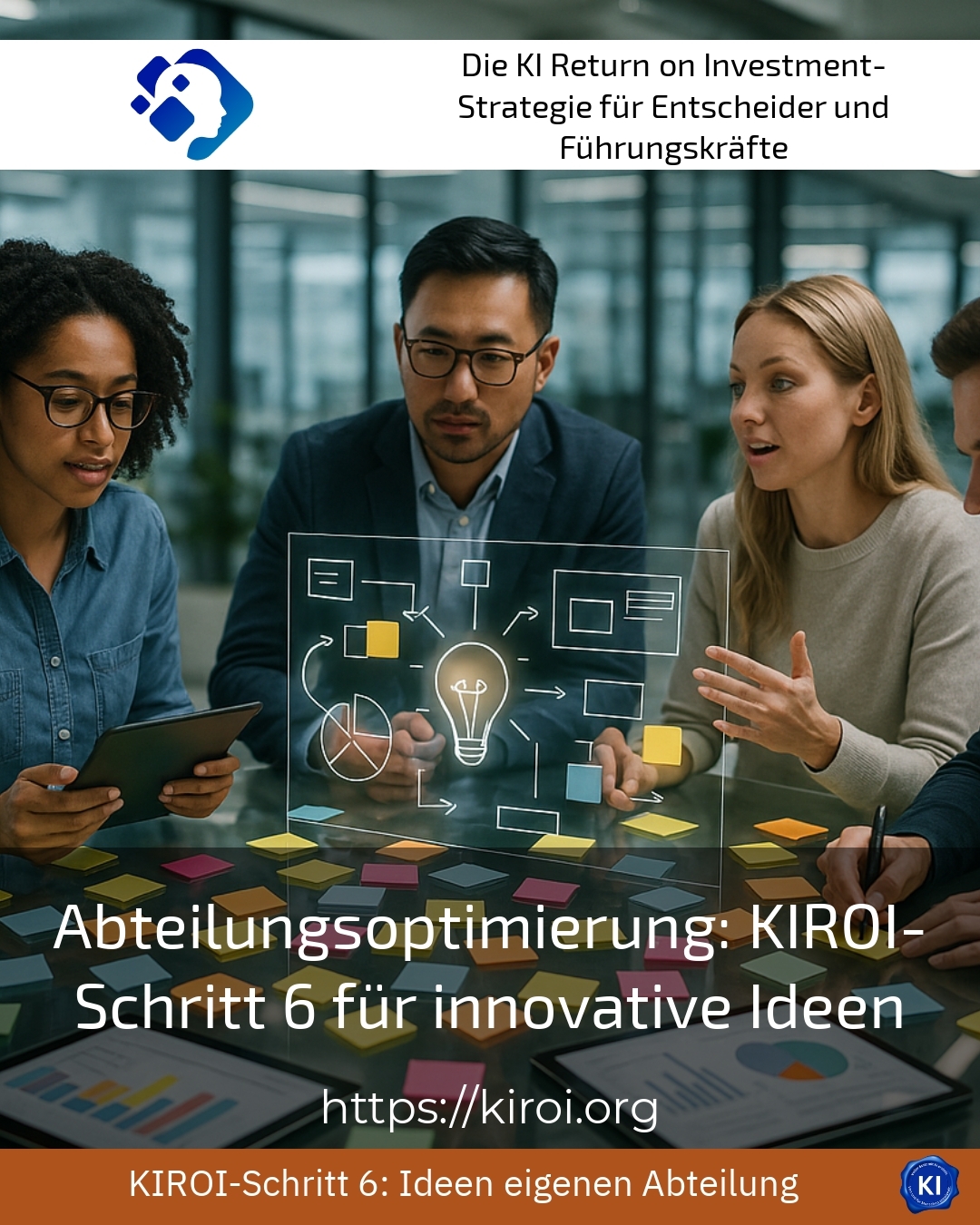In today's dynamic corporate world, departmental optimisation plays a crucial role in making processes more efficient and promoting innovation. Step 6 of the KIROI model specifically supports the development and implementation of innovative ideas. This step is essential in order to provide new impetus and support sustainable transformation within the company.
Department optimisation as a driver for innovative ideas
Innovative ideas are at the heart of successful departmental optimisation. In many companies, positive effects can be seen when employees are actively involved.
The example of the Wenzel Group shows how more than 300 employees were able to unleash hidden potential through time-limited competitions. Within just a few weeks, over 100 ideas were generated, many of which were realised.
The Strenger Group uses ideas management in a similar way to achieve strategic goals. In a competition involving almost 300 employees, over 150 suggestions were submitted that contributed to increasing efficiency and customer focus.
Digital platforms such as the one at LV1871 promote the networking of different departments and thus support the joint development of new digital services. These examples illustrate how departmental optimisation is closely linked to a culture of continuous improvement and innovation.
Methodological support for step 6 of the KIROI process
The sixth step of the KIROI model focuses on the promotion and implementation of innovative ideas. Methods such as design thinking, brainwriting and agile project management are used to incorporate a variety of perspectives.
The morphological box can serve as a practical aid to systematically record possible solutions. The fault tree analysis also helps to recognise potential risks at an early stage and develop alternative solutions.
An example from plastics production shows how the use of Six Sigma as part of departmental optimisation has significantly reduced the reject rate. The close link between analysis, implementation and control in the DMAIC cycle demonstrates the effectiveness of a structured approach.
In addition, the continuous involvement of employees in creative processes helps to sustainably strengthen acceptance and commitment to change. In addition to better processes, this often also has positive effects on the work culture.
Cooperation and digital support for innovative ideas
Digitalisation plays an important role in step 6 of departmental optimisation. Modern idea management software enables networked collaboration between different teams and locations.
The Sparkassen-Finanzgruppe shows how an open culture of exchanging ideas ensures a constant flow of innovation. Google also uses internal freedom to enable employees to realise projects that go beyond the normal working day.
Toyota has long favoured the Kaizen principle, which encourages all employees to improve. This not only leads to efficient processes, but also to greater identification with the company's own work processes.
These examples show that successful departmental optimisation is not only based on technology and methods, but also on an open corporate culture and the active involvement of employees.
BEST PRACTICE with one customer (name hidden due to NDA contract) Support during departmental optimisation was provided with a particular focus on creative workshops to develop ideas. Targeted moderation and digital tools made it possible to activate even introverted teams. The result was a large number of practical suggestions that were successfully trialled within a short space of time and brought measurable improvements.
Practical tips to support the sixth KIROI step
The following measures are recommended for effective department optimisation in step 6:
- Promote a culture of open ideas in which employees can make suggestions at any time.
- Rely on digital platforms that enable collaboration and feedback in real time.
- Use creative methods such as brainwriting or design thinking to integrate diverse perspectives.
- Work with clearly defined goals and measure the success of pilot measures.
- Integrate agile approaches so that adjustments can be implemented quickly.
If these tips are implemented, they will make a significant contribution to keeping departmental optimisation alive and anchoring innovations in the long term.
My analysis
The sixth step of the KIROI model makes departmental optimisation particularly important, as the focus here is on innovation. Companies that specifically accompany this step not only promote more efficient processes, but also strengthen a culture of creative co-design.
The integration of proven methods and digital tools makes it possible to capture a wide range of ideas in a structured manner and implement them successfully. At the same time, the involvement of employees in the innovation process is essential to ensure acceptance and commitment.
This means that departmental optimisation is not a one-off measure, but an ongoing process that helps companies to become more flexible and competitive.
Further links from the text above:
Process optimisation: definition, methods, examples [1]
Examples of idea management [2]
Process optimisation: definition, methods & implementation [3]
Process optimisation - definition, methods and objectives [19]
For more information and if you have any questions, please contact Contact us or read more blog posts on the topic Artificial intelligence here.















